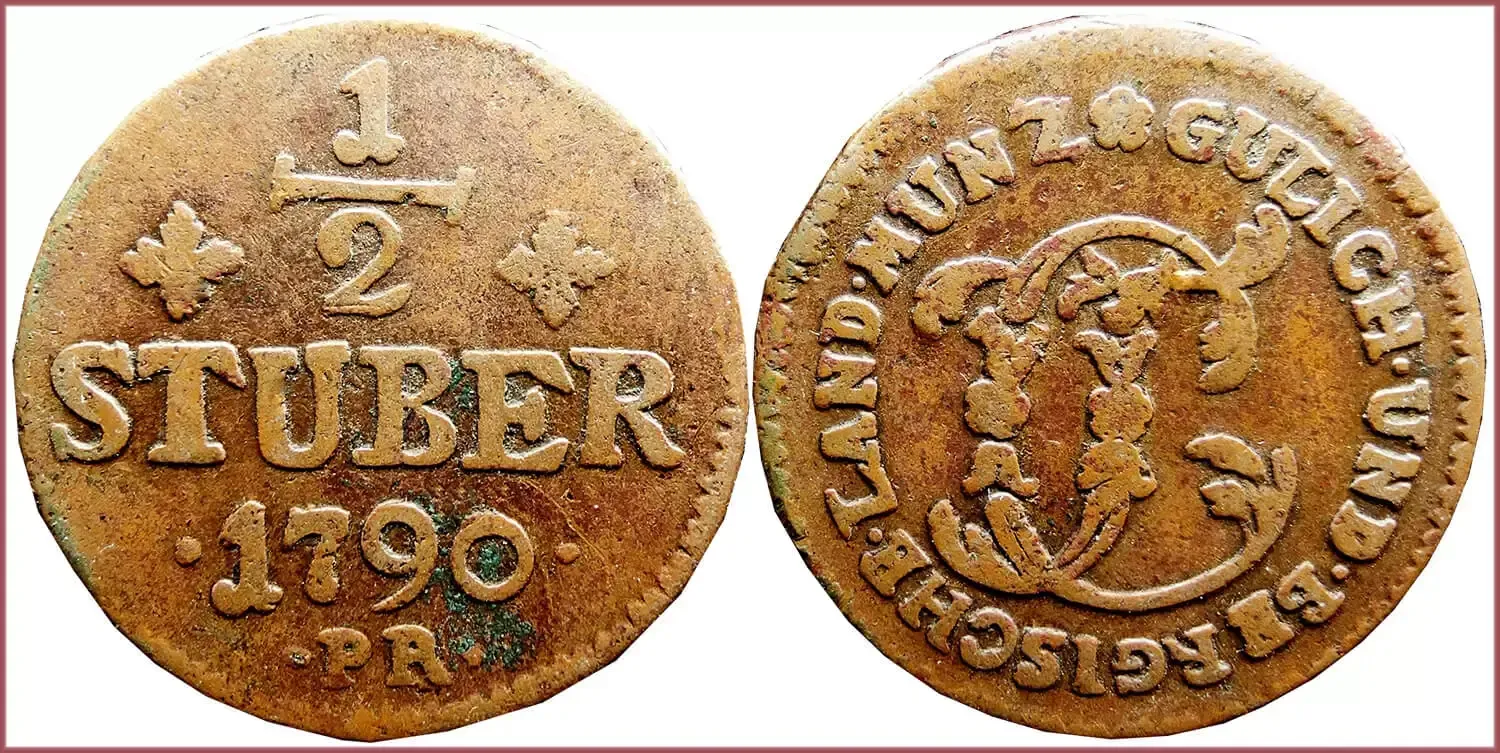STUBER: COIN OF JÜLICH-BERG (GERMANY)
1/2 stuber, 1790: Duchy of Jülich-Berg (Germany)
Ruler: Charles Theodore — German nobleman of the Sulzbach branch of the House of Wittelsbach. He succeeded his father as Count Palatine of Sulzbach in 1733 and inherited the duchies of Jülich and Berg in 1742.
1/2 STUBER.
PR (symbol under date): initials of Mintmaster Peter Ruedesheim.
GULICH UND BERGISCHE LAND MUNZ: coin of the land of Jülich-Berg.
Monogram of Duke Charles Theodore (stylized initials "CT").
- Copper: 27 mm - 7.18 g
- Reference price: 21$
COIN STUBER — WHERE & WHEN (coins catalog: by names & emitents)
- GERMAN STATES, 15th-19th centuries (County of Bentheim-Steinfurt, Grand-duchy of Berg, Archbishopric of Cologne, Cleves, City of Dortmund, County of Eastern Friesland, City of Emden, Landgraviate of Hessen-Darmstadt, Lordship of Jever, Duchy of Jülich-Berg, County of Oldenburg, Kingdom of Prussia...): stuber /exchange coin of local thalers, different ratios/
STUBER as coin name.
Stuber (German "Stüber") — old German coin that was issued in the 15th-19th centuries by northwestern and western German lands, first from silver (billon), and later from copper. It mostly served as a medium of exchange for local thalers.
The stuber coin appeared by partially borrowing the money circulation traditions of the neighboring Netherlands. The thing is that at the end of the 15th century, the Dutch silver stuiver coin spread far beyond the borders of the country, and in the neighboring German lands (East Frisia, Jever, Oldenburg, Jülich-Berg...) and in general became almost native. However, the quality of stuivers gradually decreased — they had less and less silver. Against the background of such trends, German Friesland introduced its own coin — stuber, which quickly gained popularity in the neighboring territories of modern Germany, to stabilize the financial situation.
Over three centuries of issue of stubers by various German state entities on the borders with the Netherlands, the coin has gained considerable popularity. However, despite the great variety of types presented in the period from the 1490s to the 1820s, in modern numismatic collections the stuber is not so common...
As for the name of the stüber coin, there are certain contradictions. Some sources do not distinguish German coins of this type as a separate name, but refer to them as local varieties of Dutch stuivers. Nevertheless, as a rule, the stuber and its prototype — the stuiver — are considered separate numismatic units.

